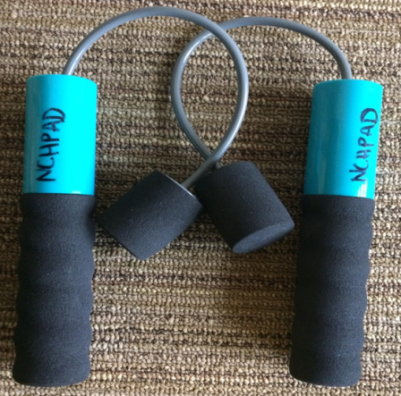Recommendations for inclusion
For Students with Visual Impairment
• Use recorded sounds or music near the QR code location to guide students with visual impairments.
• Other students can assist guiding the student through the course.
• Place the QR codes a 40 inches minimum above the finish floor or ground.
• Instead of visual activity card record a voice audio with a description of the task. Then create a QR code of the audio recording.
• Pick an area that is familiar to the students. Remove any obstacles or hazards to avoid accidents. Inform the students of any changes made to the environment.
• Place a rope with knots representing the number of the QR code location. For example, if QR code location #2 is a jumping jacks station place a rope with two knots.
For students with mobility impairments
• Select activities with appropriate adaptations. For example, if a student who uses a wheelchair needs to jump rope provide a jump rope cut in half with knots at the ends (see figure 5).
Figure 5: Adaptation for jump rope

• Provide enough room for students that need to transfer from a wheelchair to the floor or a mat to complete a task.
• Place the QR codes in areas that are completely accessible.
• Consider the distance from one QR code to the other. Ensure that students are getting enough physical activity considering their abilities.
Setting up an inclusive QR code scavenger hunt requires time for planning. However, the integration of technology, teamwork and the discovery-driven quality of scavenger hunts might enhance enjoyment and students participation in physical activity.
